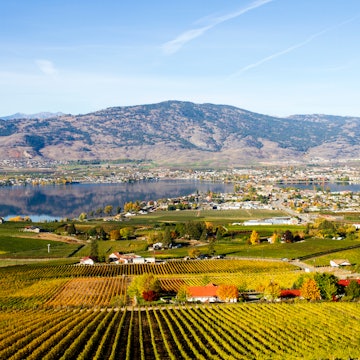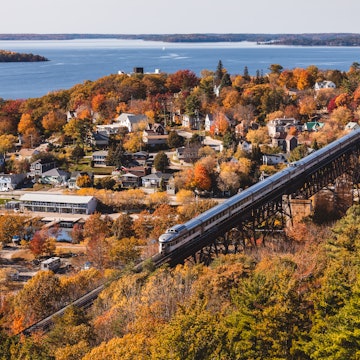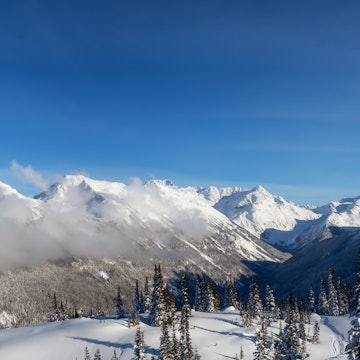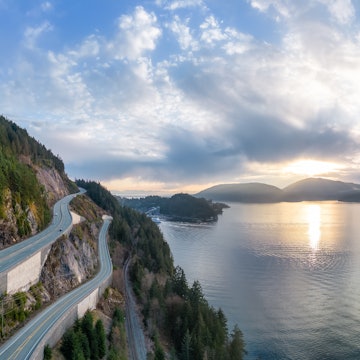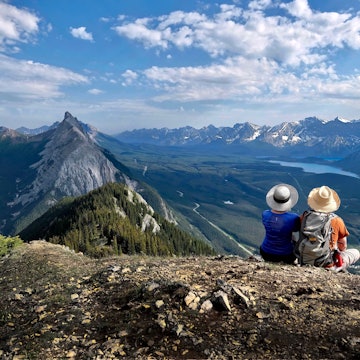
Crossing the Canadian Rockies by train: Here's what I saw on my week-long adventure

Mar 31, 2023 • 10 min read

Crossing the Canadian Rockies by train © Via Rail
Our slow travel series explores how you can take more mindful journeys by train, boat, bus or bike – with tips on how to reach your no-fly destination, and what to see and do along the way. Here, writer Marcia DeSanctis reports on crossing the Canadian Rockies by train – and the natural wonders she saw in Jasper National Park during a stop-off.
The Canadian Rockies form a vast and pristine wilderness straddling the provinces of British Columbia and Alberta. This region covers an area of 180,000 sq km (69,500 sq miles), contains seven national parks and provides some of the most dramatic scenery on earth.
The value of a visit here lies, in part, in its remoteness. So to get there, I hopped a train in Vancouver for Unesco World Heritage site Jasper National Park, 510 miles away. The next train to Edmonton, my ultimate destination, would not be for four days.

Departure
“If we can’t export the scenery, then we’ll have to import the tourists,” declared Canadian Pacific Railway President William Cornelius Van Horne in 1880. With adventure on the brain, I boarded at Vancouver’s Pacific Central Station to complete the first leg of the route Via Rail Canada has branded the Canadian (it crosses the continent, all the way to Toronto).
For my night on board, I secured a Sleeper Plus Cabin for two (even though I was solo). The train, built in the 1950s, retains a romantic authenticity: stainless-steel fixtures, etched glass, worn leather chairs and a handsome, old-world dining car. “It’s a rolling museum,” said service coordinator Sean Pidgeon.
My class of service gave me access to a lounge and the Dome, an elevated car enclosed in glass offering 360-degree views of the landscape. Darkness fell soon after we left the station, so I chose the early dinner seating, and was placed at a table with three other travelers. I returned to see my sitting room transformed to a cozy bedroom. I slept well as the train trundled south, intermittently awakening to the soothing rumble of wheels on the track.

I awoke at 5am to see the sunrise – only to remember that in northern winter day breaks much later. I sipped coffee in the Dome until the first muted rays of morning opened up a landscape that hardly looked real. I saw jagged snowy peaks, plunging valleys, frozen lakes, granite ravines and dense stands of lodgepole pines and pale-white birch.
The train powered through a heavy snowfall, reaching an altitude of about 5000ft before we descended into a valley, snaking along iced-over rivers and streams. We were deep into the Rockies, passing the highest peak in the range, Mt Robson, as well as the frozen wonders of Pyramid Falls and Moose Lake. At Yellowhead Pass, just before the Alberta border, we crossed the continental divide, where water flows either west to the Pacific or east to the Atlantic.
Welcome to Jasper: Banff's cool little brother
Twenty-one hours later, I arrived in Jasper, picked up my rental car, and checked into my room at Fairmont Jasper Park Lodge. No more relaxing in the quiet of a train: the next days would be all about immersion in nature, and exploring Jasper’s distinctive culture and style.
I met Estelle Blanchette, who runs Jasper Food Tours, for a spin through this small, utterly captivating mountain town, which has a surprisingly eclectic and unique food scene. We went to four restaurants and bars, sampling elk meatloaf, falafel, a succulent pork rib and maple cheesecake. We sipped beer from Jasper Brewing Co., a range of Canadian wines and, at Fiddle River, something marvelous called Sortilège – Canadian whiskey flavored with maple syrup.

Different from Banff, another national park and a somewhat glossier town 180 miles to the southeast, Jasper is laid-back and intimate. More than three hours from the nearest airport in Edmonton, Jasper is a destination for the daring, the curious and the bold. “Jasper is Banff’s cool little brother,” is a commonly heard bon-mot around town.
Jasper Park Lodge has Hollywood links: Marilyn Monroe checked in when she was filming River of No Return, and Bing Crosby loved to golf here back in the day. Nonetheless, the 100-year-old JPL is a wild expanse of a place. With low-slung log cabins, and a Great Hall constructed of fieldstone and cedar, the property is an organic extension of the national park that surrounds it. At the hotel, you can grab a fat-tire bike, or use the hotel as a base for backcountry exploration, or skate on the lake. There is an entire building of gear to make all these wintry pursuits possible (and fair-weather ones, too). Elk – known as “wapiti” in the Cree language, for “white rump” – graze around the property’s perimeter (separated by a fence, of course).

The Jasper Planetarium is located at the hotel: Jasper National Park is a noted Dark Sky preserve. Each night, there is an excellent show in the dome, as well as stargazing with experts, with the help of powerful telescopes. I saw the constellation Auriga, the star cluster Pleiades, Jupiter and four of its moons, bright pink Mars, and this year’s celebrated Comet E3 ZTF – a blue smudge in the sky.
In the morning, under a powdery snow, I met a van from Sundog Tours for a wildlife tour. We spotted no wolves or lynx on this run, but did see many elk, mule deer and bighorn sheep on the crags. And tons of frozen landscapes: along the Athabasca River, and glacier-fed Medicine, Jasper, Maligne and Talbot Lakes, it was one spectacular vista after another. Spindrift swirled in ghostly clouds over the white bodies of water.
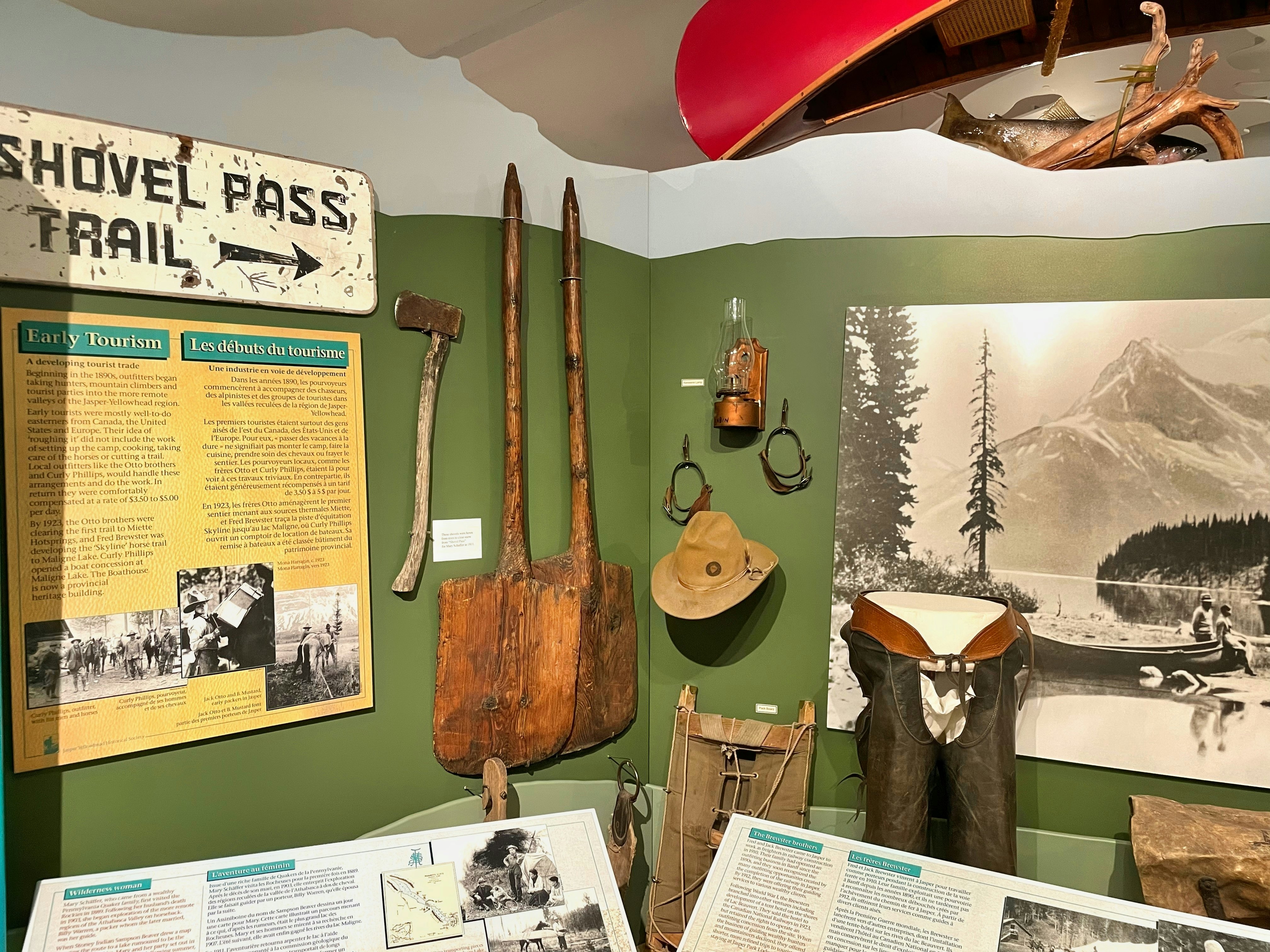
It’s never a mistake to visit the local history museum. In the afternoon, after a bowl of JPL’s famous tomato soup, I went for a tour of the Jasper-Yellowhead Museum & Archives, to learn more about Jasper’s human, economic and geological past as a transportation and fur trading hub. I had crispy Brussels sprouts and pork belly at Terra in town for dinner – further proof that Jasper is a thriving center for innovative, local-based cuisine.
Icefields Parkway, which connects Jasper with Banff National Park, is consistently named one of the most beautiful drives in the world. For this, I needed a National Park pass, which I placed on my dashboard. Advised to pack water and snacks, I set forth at 8am; snow tires are required on rentals, thankfully. The parkway had been closed for three days due to a snowstorm, and there were few cars on the road. I was overwhelmed by the horizon – there was so much raw beauty to take in – and I stopped my car every couple of seconds to take pictures.
I affixed my trusty spikes, and hiked up to the blue-ice mass at Athabasca Falls – and it was dizzying and powerful to look down into the gorge. I hoped no stray grizzly would come out of hibernation. Next, I trekked up to Sunwapta Falls, and stared with some trepidation at the great frozen chasm below. About 90 minutes into the Icefields drive, a storm churned up, so I turned back to the warmth and safety of JPL.

In the evening, next to a firepit on the property, I had a fireside chat with Matricia Bauer, a member of the Cree tribe and founder of Warrior Women. Until they were forcibly expelled in 1907, an estimated 26 Indigenous tribes inhabited and connected with the land that became Jasper National Park. Bauer, whose Cree name is Iskoachitawichy, or She Who Moves Mountains, aims to “indigenize the world, one drum beat at a time,” by reviving and retelling the stories of Canada’s First Nations people.
She was joined by Theresa Westhaver, a member of the Secwépemc tribe and the Indigenous Relations Liaison to Jasper National Park. The pair sang some intertribal songs, and one in the Cree language, keeping tempo with their drums. Among the many fascinating bits of knowledge: their respective tribal languages have no commonalities. “They are as similar as English and Chinese,” Westhaver told me.
The Ice Walk into Maligne Canyon descends 165ft (50m) into the limestone gorge. Slippery conditions were no issue with spikes, and the team also furnished us with tall rubber boots (and helmets, in case of falling chunks) for the slushy parts. We passed several waterfalls, frozen like monumental sculptures on the cliffsides, as well as caves, ice shelves and smooth canyon walls carved by water. The tour includes lunch, and the bison chili hit the spot after an active morning.

I asked around the hotel for the best place to see sunrise in Jasper, and decided on Pyramid Lake, about 15 minutes away. There is not a lot original to say about witnessing the dawn of a new day, even an exquisite one such as I saw over the towering, snow-capped summit of Mt Edith Cavell. Yet I believe that even when it demands patience, even it is 15°F outside, watching the first light pour from the sky is a most intimate occasion, and one that connects a traveler indelibly to a place.
Under a clear blue sky, I was back on the Via Rail train to Edmonton. Service manager Priyan Thomas welcomed me, and said, “I’ve been doing this for 25 years, and the views are so beautiful, I’m still taking videos every time I go through the Rockies.”
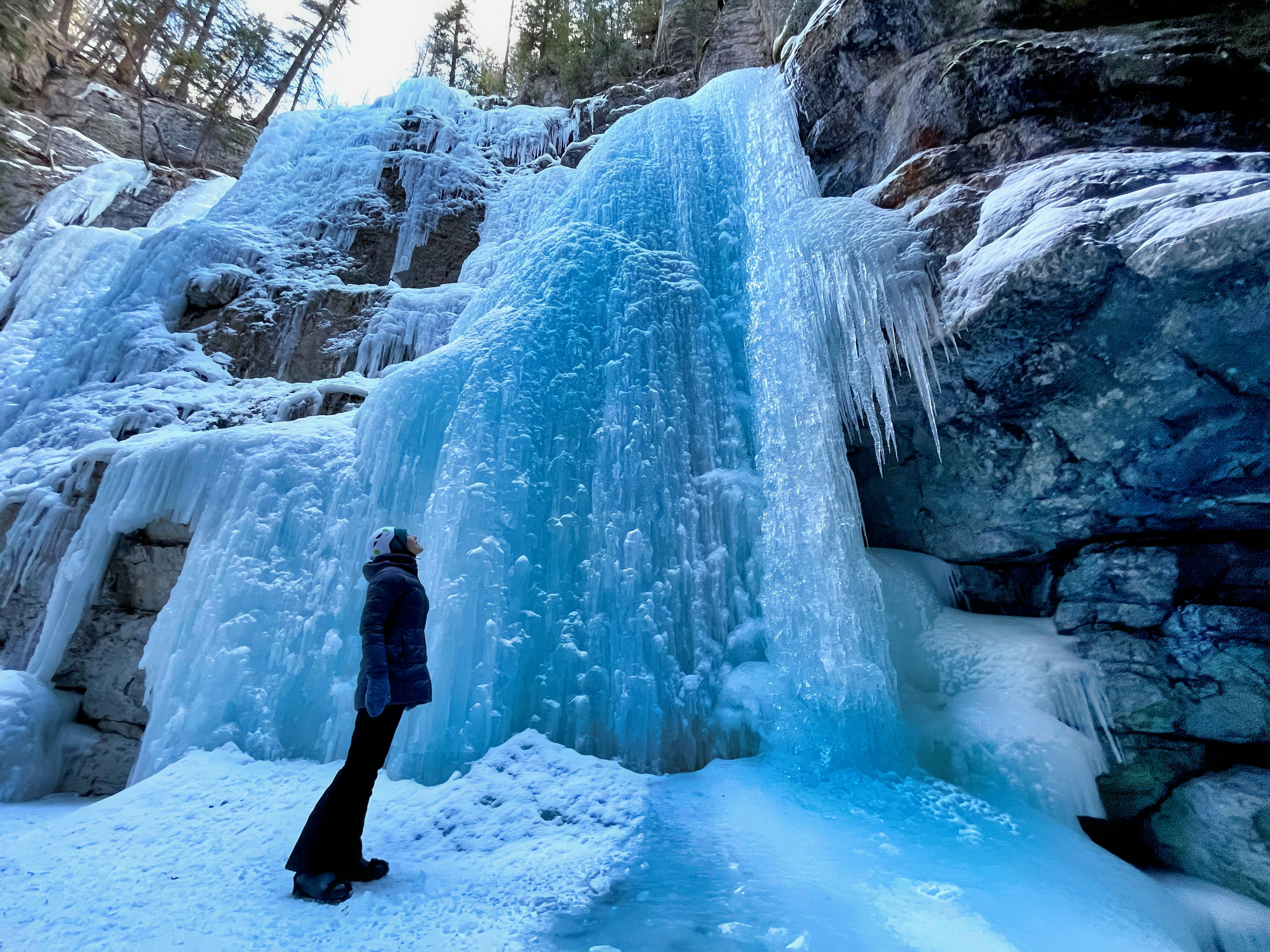
Edmonton: A sweet ending to a brilliant journey
An hour into the trip, the land flattened out. We were on the edge of the great Canadian prairie – and in a snowstorm, with ferocious-looking winds, I understood why people prefer the six-hour train to the 3.5-hour drive. After dinner, I arrived in Edmonton and checked into the JW Marriott Ice District, a skyscraper. This former frontier town is today a city of 1.5 million people.
I met Kieth Diakiw of Talking Rock Tours for a fascinating walk through the cultural and geological history of the North Saskatchewan River Valley. Edmonton has the longest stretch of contiguous urban parkland in North America, and it feels almost alive with history: of the colonial settlers who set up a western outpost of the fur-trading Hudson’s Bay Company, and the Blackfoot, Cree, Dene, Iroquois and other Nations that were the region’s first inhabitants. Diakiw is métis, someone of mixed European and Indigenous race, and he led me to a sacred burial ground, as well as to the Indigenous Art Park, where vibrant works by six artists were on display.
For my last dinner in Canada, I ate at Biera, one of the brightest stars on Edmonton’s food scene. I had fromage blanc dumplings, served with a sauce of kale, lemon and whey, as well as a flight of house-brewed micro beers. For the plane home, I packed a couple of salted caramel and rose macarons from Little Duchess Bake Shop, which I sought out in the afternoon. It was a sweet ending to a brilliant journey to Western Canada.
What I bought
Lots of books for the quiet time back at the lodge, and then for the train to Edmonton. I picked them up in downtown Jasper and at the museum, both as mementos and for research. I love digging deep into a place you are spending time.
What I brought
Microspikes are easy to slip onto my all-weather, waterproof Lowa Renegade hiking boots. They are also instant miracles: the crampons make me feel like Spider-Man when I walk on ice, with my confidence, balance and safety improving immeasurably. And my Black Diamond retractable poles are very handy to pack – plus, they carry all sorts of memories for me.








